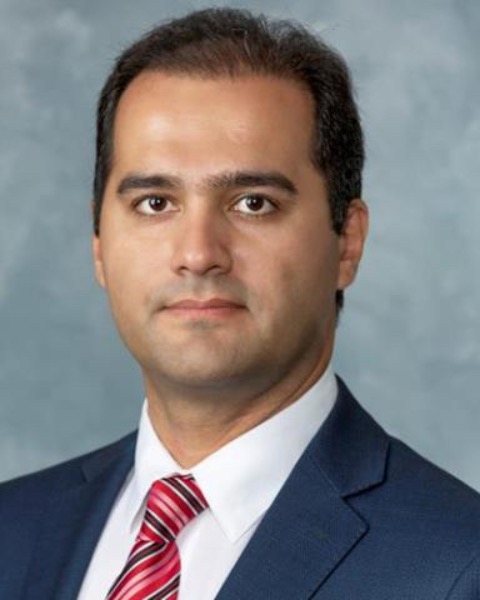Minimally Invasive/Motion Preservation
Standalone Minimally Invasive (MIS) Lateral Lumbar Interbody Fusion (LLIF) for Adjacent Segment Pathology: Preliminary Comparison with Open Transforaminal Lumbar Interbody Fusion (TLIF)
Friday, February 21, 2025

Rouzbeh Motiei, MD, FCNS
Assistant Professor of Neurosurgery
University of Kentucky
Lexington, KY, US
Presenting Author(s)
Introduction: Adjacent segment pathology (ASP) is a common consequence of posterior lumbar fusion (PLF), often treated posteriorly involving a posterior- (PLIF) or transforaminal lumbar interbody fusion (TLIF). There is paucity of data on standalone lateral (LLIF) and oblique lumbar interbody fusion (OLIF) in this pathology. We investigated our preliminary results of patients treated with MIS-LLIF and MIS-OLIF for single or 2-level ASP and compared the results with a cohort of ASP patient treated with open TLIF.
Methods: Prospective series of patients treated for lumbar ASP (L1-S1) after an index PLF. Patients with more than 3 levels of pathology, fusion extension beyond lumbar, pedicle screw fixation without interbody fusion at each level or those without follow-up data were excluded. Patients who had a pathology else than degenerative ASP were also excluded.
Results: 6 and 29 patients underwent LLIF/OLIF and TLIF, respectively. Age, gender, ASP level, and number of levels addressed were equally distributed in the 2 groups (p = 0.94, 0.83, 0.58, 0.34). Pre-operatively, visual analogue scale (VAS) for leg pain was higher in the TLIF group (p = 0.03), while Oswestry Disability Index (ODI) and Euro QoL (EQ)-5D were equal (p = 0.19 and 0.08). Moreover, follow-up was longer in TLIF group compared to the LLIF/OLIF (31.3 vs. 14.1 months; p = 0.001). On the last follow-up, all patients in the LLIF/OLIF group had improved radiculopathy and none was reoperated. In the TLIF group, 24 (82.8%) had improvement in the radiculopathy, 2 (6.9%) had residual radiculopathy (without evidence of pathology on imaging), and 3 (10.3%) had reoperation despite initial improvement (due to pseudarthrosis in 2 and ASP in 1). The difference in clinical status or reoperation rate did not reach statistical significance (p = 0.55 and 0.41). Post-operatively, the percent change in VAS for radiculopathy, ODI, or EQ-5D was comparable in both groups (p = 0.27, 0.42, 0.59). No major or permanent complications happened in either group.
Conclusion : Our preliminary results show that in select patients, standalone MIS LLIF or OLIF is a safe and feasible approach in treating 1- or 2-level ASP with results as effective as (if not superior) to the standard TLIF.
Methods: Prospective series of patients treated for lumbar ASP (L1-S1) after an index PLF. Patients with more than 3 levels of pathology, fusion extension beyond lumbar, pedicle screw fixation without interbody fusion at each level or those without follow-up data were excluded. Patients who had a pathology else than degenerative ASP were also excluded.
Results: 6 and 29 patients underwent LLIF/OLIF and TLIF, respectively. Age, gender, ASP level, and number of levels addressed were equally distributed in the 2 groups (p = 0.94, 0.83, 0.58, 0.34). Pre-operatively, visual analogue scale (VAS) for leg pain was higher in the TLIF group (p = 0.03), while Oswestry Disability Index (ODI) and Euro QoL (EQ)-5D were equal (p = 0.19 and 0.08). Moreover, follow-up was longer in TLIF group compared to the LLIF/OLIF (31.3 vs. 14.1 months; p = 0.001). On the last follow-up, all patients in the LLIF/OLIF group had improved radiculopathy and none was reoperated. In the TLIF group, 24 (82.8%) had improvement in the radiculopathy, 2 (6.9%) had residual radiculopathy (without evidence of pathology on imaging), and 3 (10.3%) had reoperation despite initial improvement (due to pseudarthrosis in 2 and ASP in 1). The difference in clinical status or reoperation rate did not reach statistical significance (p = 0.55 and 0.41). Post-operatively, the percent change in VAS for radiculopathy, ODI, or EQ-5D was comparable in both groups (p = 0.27, 0.42, 0.59). No major or permanent complications happened in either group.
Conclusion : Our preliminary results show that in select patients, standalone MIS LLIF or OLIF is a safe and feasible approach in treating 1- or 2-level ASP with results as effective as (if not superior) to the standard TLIF.

.jpg)